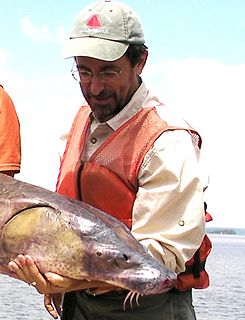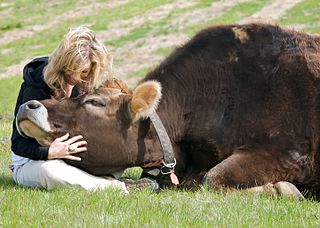A Quote by Andrew Revkin
The survey of more than 100 waterways downstream from treatment plants and animal feedlots in 30 states found minute amounts of dozens of antibiotics, hormones, pain relievers, cough suppressants, disinfectants and other products. It is not known whether they are harmful to plants, animals or people. The findings were released yesterday on the Web site of the United States Geological Survey, which conducted the research, and in an online journal, Environmental Science and Technology.
Quote Topics
Animal
Animals
Antibiotics
Cough
Downstream
Dozens
Environmental
Environmental Science
Findings
Found
Geological
Harmful
Hormones
Journal
Known
Minute
More
Online
Other
Pain
People
Plants
Products
Released
Research
Science
Science And Technology
Site
States
Survey
Technology
Than
Treatment
United
United States
Web
Were
Whether
Which
Yesterday
Related Quotes
One of many problems with survey research in general is that you can only survey the survivors. In other words, if you were to do a survey of people who were known to have played Russian Roulette and you sent out the questions before the time they were going to play and then you come back six months after they played Russian Roulette, you would probably discover that among the people who did come back there was no harm done.
There was a research I think team, which conducted a survey about what Indians think of Americans, and 71 percent I believe said, well, I think all the nice things about our working together with the United States. But there are people I think that are old mind-sets, who still I think remain mired in the Cold War ideology.
Additional federal studies are under way to see if any contamination reaches taps or ground water used for drinking, but the program under which they are conducted, the toxic substances hydrology program of the geological survey, is slated to be eliminated under budget cuts proposed by the Bush administration, government officials said... estrogens and similar compounds are increasingly the focus of research by the Environmental Protection Agency and many scientists because of hints that they alter sexual characteristics in fish and other aquatic species.
Variable but forecastable renewables (wind and solar cells) are very reliable when integrated with each other, existing supplies and demand. For example, three German states were more than 30 percent wind-powered in 2007 - and more than 100 percent in some months. Mostly renewable power generally needs less backup than utilities already bought to combat big coal and nuclear plants' intermittence.
The phytochemicals, antioxidants, and fiber- all of the healthful components of plant foods- originate in plants, not animals. If they are present, it is because the animal ate plants. And why should we go through an animal to get the benefits of the plants themselves? To consume unnecessary, unseemly, and unhealthy substances, such as saturated fat, animal protein, lactose, and dietary cholesterol, is to negate the benefits of the fiber, phytonutrients, vitamins, minerals, and antioxidants that are prevalent and inherent in plants.
Let's stick to the practical and the concrete: Would you like it if people lived in a virtual world? If machines were smarter than people? If, in the future, people, animals and plants were products of technology? If you don't like these ideas, then for you the computer and biological sciences clearly are dangerous.
Inwardness is the characteristic feature of the vegetable rather than the animal approach to existence. The animals move, migrate and swarm, while plants hold fast. Plants live in a dimension characterised by solid state, the fixed and the enduring. If there is movement in the consciousness of plants then it must be the movement of spirit and attention in the domain of vegetal imagination. (...) This is the truth that the shamans have always known and practiced. Awareness of the green side of mind was called Veriditas by the twelfth century visionary Hildegard Von Bingen.
Yes, all of life is sacred, including plants; and yes, there is research that demonstrates that plants have feelings - they feel it when their leaves or stems are ripped - and there is scientific evidence that while plants do not have brains and nervous systems like animals, they nevertheless actively work to ensure their survival - they want to live, thrive, reproduce, evolve.





































